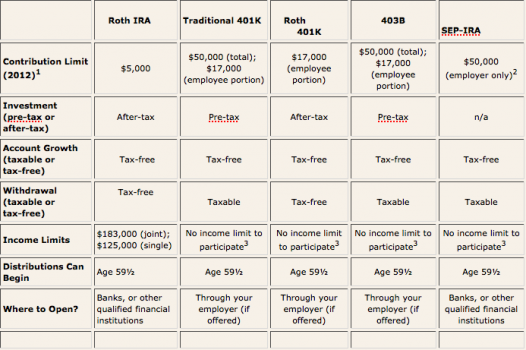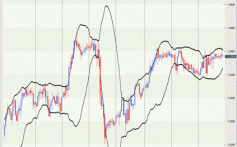Roth 401(k) and Roth 403(b) Plans
Post on: 16 Март, 2015 No Comment

Beginning on January 1, 2006, there are two new types of retirement plans available to employees – the Roth 401(k) and the Roth 403(b). The same rules apply to a Roth 401(k) and a Roth 403(b), so I will only refer to the Roth 401(k).
You may already be familiar with a regular 401(k) plan. You have money withheld from your paycheck, and that money is deposited into your 401(k) account. You receive a deduction on your income tax return for this deferred compensation by not having the contribution included in your Form W-2 wages. Your employer probably makes matching contributions for you. When you retire and receive a distribution from your 401(k) plan, the entire amount of your distribution will generally be taxable to you.
You may now be able to designate some or all of the amount you contribute to your 401(k) plan as a Roth 401(k). Any amount you designate as a Roth 401(k) will not be deductible. It will be shown in box 12 of your Form W-2. The code will be “AA” for a Roth 401(k) and “BB” for a Roth 403(b). This amount will also be included in your taxable wages in box 1 on Form W-2. This means that there is no deduction for the contribution. You do not need to enter these contributions anywhere else in TurboTax, and they will not appear anywhere on your tax return.
A qualified withdrawal from a Roth 401(k) is not taxable. This includes your original contribution and earnings. For a distribution to be qualified, you must be at least age 59-1/2 and have had a Roth 401(k) at least 5 years. Thus, 2011 is the first year you can make a qualified withdrawal from a designated Roth 401(k) started in 2006.
Employer matching contributions cannot be contributed to a designated Roth 401(k) account. They are contributed to a regular 401(k) account and are taxable when withdrawn. This is true even if you are only investing in a designated Roth 401(k) plan.
Designated Roth 401(k) plans are similar to Roth IRAs in many ways, but there are some important differences.
For 2006 and 2007, the most you can contribute to a Roth IRA is $4,000 ($5,000 if age 50 or older). For a Roth 401(k), the maximum is the same as a regular 401(k). For 2006 this is $15,000 ($20,000 if age 50 or older). For 2007 this is $15,500 ($20,500 if age 50 or older).
The amount you can contribute to a Roth IRA is phased out depending on your modified adjusted gross income and your filing status. There is no such restriction on the amount you can contribute to a designated Roth 401(k).
However, designated Roth 401(k) accounts are subject to the required minimum distribution rules when you reach age 70-1/2. Roth IRAs are not subject to these rules.
Finally, the first time home buyer exception that applies to Roth IRAs, does not apply to Roth 401(k) plans.
forums.turbotax.com/intuit/board?board.id=retirement06














